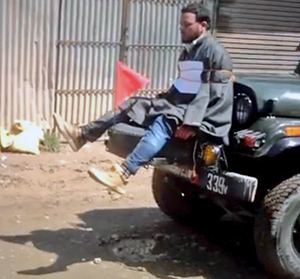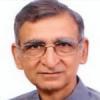The turmoil in Kashmir, which got intensified after the fake encounter of Burhan Wani (July 2016), does not seem to abet. It has been worsening as reflected in the ongoing violence leading to low turnout of voters in the by poll (April 2017). Shockingly there was a turn out only of 7.14 percent of voters. The by-polls were also marred by violence in which, many a civilians and security force person also died and lately one witnessed with great horror a Kashmir youth being tied to the military truck to prevent stone pelters from throwing stones on the vehicle.
Those pelting stones don’t seem to be stopping despite the lapse of period of time. These young men are being looked at in various ways. Farookh Abdullah had stated on the eve of elections that those young men throwing stones are doing so for their nation. This statement of his came under scathing criticism from various quarters and section of media and was dismissed by many as a pre election statement.
Another way of looking at those pelting stones; as gleaned from section of media; is that these are pro-Pakistan elements. They are being instigated by Pakistan and that they are doing this for money. As such stone pelting has been used as a method of protest in Kashmir since ages but has become glaringly obvious from last few years. Intimidated by the terrorists-militants on one side and the security forces on the other these young men have been resorting to pelting stones as a form of protest and anguish. One can see the clear pattern in worsening repression and an increase in their activities. As such after every major act of hanging-murder the protests have become more intense e.g. after the hanging of Maqbul Butt (1984), then after the hanging of Afzal Guru (2013) and now after the killing of Burhan Wani (2016).
Who are these boys who pelt stones? Are these merely Pakistan inspired and funded youth? In the aftermath of state crackdown; hundreds have died, thousands have been wounded and many more have lost eyesight! A section of TV and other media is going hammer and tongs about the role of Pakistan and the funding they receive. The question which needs to be introspected is that will young people risk their life, loss of eyesight or other harm to body just for someone’s bidding or some money? Many of them are teenagers, tech savvy and they are so much full of deep hatred that they are willing to risk their lives, not caring about their future. The degree of frustration among them must we horrific.
Only a small section of media has gone deeper into the issue and have interviewed some of them. The stories of their experiences and feelings shatter one’s perceptions about law and order in Kashmir. Many belong to families which have given up hope of any type. Most of these young boys have experienced torture, beating, harassments of sorts and often humiliation For many of them stone throwing comes as sort of catharsis, a feeling of having taken revenge of what has happened to them. It is the only strong way of protest they must be feeling is left for them. Many of them are Pro Pakistan for sure but the basic point remains political alienation which is seeping in deepening. This in turn is due to the suffering and pain to which Kashmir has been subjected due to the prolonged military presence in the area.
Post Burhan Wani murder, the Kashmir based PDP, or even national Conference has been able to see the intensity of the situation. Mahbooba Mufti, the Chief Minister of the ruling coalition, wanted to go for a dialogue with the dissenters, but coalition partner and the party leading at center BJP shot down the idea. Mahbooba Mufti felt that dialogue is the only way out but BJP feels that dialogue is a way to befool the people. It seems the ruling BJP wants to take a hard line to deal with dissidence, regards that dissidence is there only due to Pakistan or ISIS and so repression should be intensified.
What have earlier efforts for peace which need to be recalled in the present damning times? In one of the most significant move UPA II had appointed a team of interlocutors to understand and suggest the way out. The eminent team suggested that the autonomy of Kashmir Assembly, which is part of treaty of accession, be restored, dialogue with dissidents to be initiated and also talks with Pakistan be undertaken along with repeal of Armed Forces Special Powers Act.
Today there can be two approaches one is to recall the treaty of accession and gravitate towards that and take the recommendations of Interlocutors seriously. Nearly seven decades after the accession of Kashmir to India, there is a need to recall that forcible merger; repression of dissent was never the idea of founders of Indian nation. Let’s see what Sardar Vallabhbhai Patel had to say on the matter way back, Deputy Prime Minister Vallabhbhai Patel said at a public meeting in Bombay on October 30, 1948: “Some people consider that a Muslim majority area must necessarily belong to Pakistan. They wonder why we are in Kashmir. The answer is plain and simple. We are in Kashmir because the people of Kashmir want us to be there. The moment we realize that the people of Kashmir do not want us to be there, we shall not be there even for a minute… We shall not let the Kashmir down” (The Hindustan Times, October 31, 1948).
The situation in Kashmir is critical, and worsening by the day due to the high handed dealings from the center. Even the Chief Minister of Kashmir and the people like Sheikh Abdulla need to be listened to, if we want peace in the green valley, peace which is crucial. The deeper peace can only be won through winning the hearts and minds of the people of Kashmir, ultranationalist formulations don’t work in the long run.






Comments
Add new comment